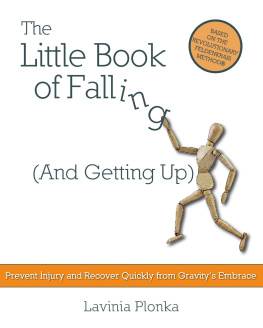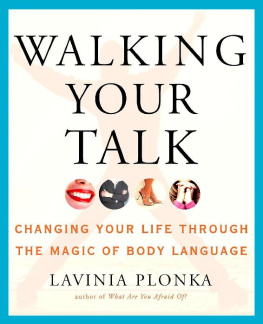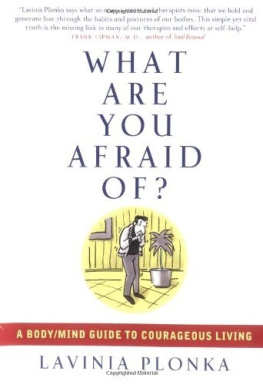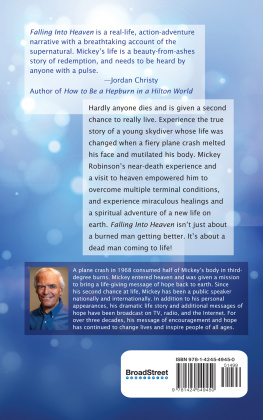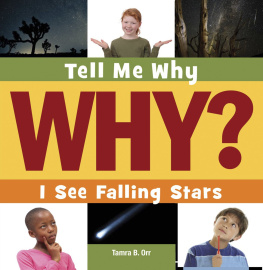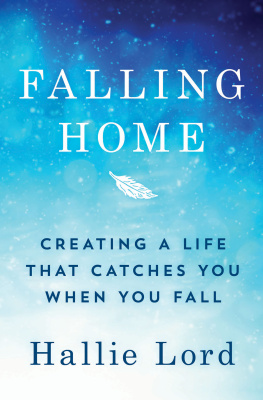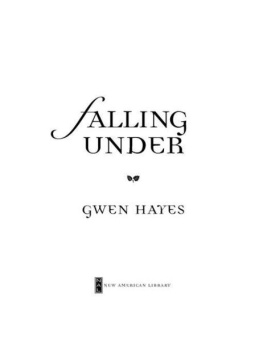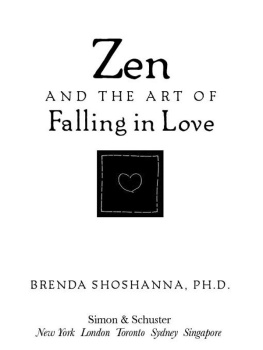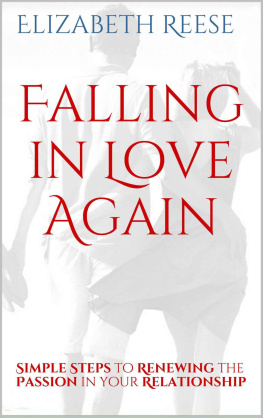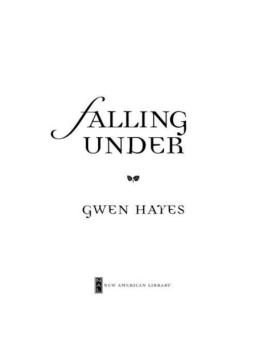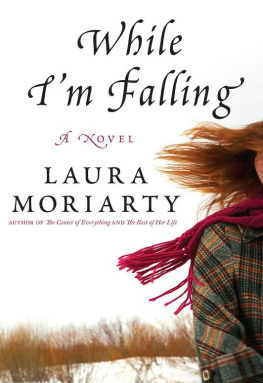

ISBN: 9781620950807
Cover Design: Victoria Jones Startle Illustrations: Ron Morecraft Special Thanks: Barbara Marlowe, Laura Bond, Bonita Osley
The Feldenkrais Method is an educational system, not a substitute for medical treatment. Although the lessons are gentle and extremely effective when instructions are properly followed, please consult a physician if you have any doubts or questions about your ability to do these activities .
Introduction
Ive been falling all my life. As a child, I often found myself lying face down in the mud, grass or street without realizing how I got there. One memorable fall pitched me head first down the stairs. Before I could cry, my parents grabbed me, sat me at the kitchen table and served me a bowl of ice cream; a rare treat that perhaps made me forever think that falling down was a good thing.
When I was a young actor, one of my wise teachers told me that we are successful when we turn our liabilities into assets. I became a mime and physical comedienne specializing in dive rolls, prat falls and kicks in the pants. It was nice to get paid for falling down.
But it didnt cure my clumsiness. Offstage I still fell down stairs, on hiking paths, and sidewalks. Sometimes my theater skills helped. Once after a rain, I slipped on some mud while jogging. I tucked, rolled and kept running. A woman came panting up next to me. Is that some new kind of aerobic exercise? she asked.
Sometimes nothing helped and I had to nurse bruises, sprained ankles and even a couple of bloody noses. Then I discovered the Feldenkrais Method. Developed by Dr. Moshe Feldenkrais, the Feldenkrais Method uses small, slow movements combined with awareness that change the way you move, think and act. I had no idea it would affect my falling. I just wanted to stop the aches and pains that seemed to be part of my career. What I discovered was an avenue towards better posture, greater relaxation and more efficient movement. And I learned that while falling is a fact of life, you can develop strategies for both landing more softly as well as swifter recovery.
The exercises in this book are based on Moshe Feldenkrais teaching. He called his movement sequences Awareness Through Movement lessons. While its true that we are often hyper-aware while walking on ice, or crossing a stream, that awareness is often laced with tension. Awareness Through Movement lessons teach people how to sense their movement, sensations, feelings and thoughts without stress.
We use the word falling for countless emotional experiences: falling in love, into debt, out of favor, from grace. Oxfords Dictionary has two pages dedicated to definitions of falling. Over the last twenty years, Ive worked with thousands of people. Many had injuries from falling or were afraid of falling. Sometimes it wasnt so much about falling as it was about getting up. Often after studying the movements of the Feldenkrais Method for a while, people come up to me with big grins and said, Hey Lavinia, guess what, I fell on the ice yesterday, or I was working in the garden, pulling weeds and went down! These announcements ended with, and amazingly, I didnt hurt a thing!
Falling happens so quickly, theres no time for the ordinary thinking brain to make a choice. You have to rely on your kinesthetic intelligence. Thats the part of your body/mind that governs your movement habits. Your kinesthetic, or sensory intelligence knows exactly what to do as you back your car out of the driveway, flip an egg or ride your bicycle. While you cant train yourself to fall, you can develop a more intelligent body that can help you in the event of a fall.
By exploring the movements in this book, you will discover a new way to prepare yourself for the inevitable. All of us are subject to gravity. Why not make it your friend?
How to Use This Book
Ive organized this book as a user friendly introduction to aspects of falling and getting up; from the biomechanical to the psychological and metaphoric. It aims to help you become more flexible and resilient so you are and therefore more able to recover in the event of a fall.
When you get to the exercises, do them slowly, in a relaxed fashion. The motto of the Feldenkrais Method is less pain, more gain. Each person does the movements according to his own ability, understanding and interest. If you find something is too difficult to understand or to do, then you are right, your nervous system is not ready. That doesnt mean you should strain, and it doesnt mean that wont be able to do it later. Work with the movements that feel pleasurable to do, and eventually, all the movements in this book will be accessible. The sequences in this book are written in a condensed, abbreviated style so you dont have to follow a lot of detail as you move. However, many people prefer following audio instructions rather than reading them in a book. So I have recorded expanded versions of all these lessons, essentially an entire workshop, which are available for purchase as a CD or MP3 download.
There are video links included with some of the movement lessons. These clips are just for reference, there is no need to imitate them. You have your own way of moving, your own way of responding to instructions. Think of the video as a moving illustration of the instructions in case the words themselves are not enough.
Fall down eight times, get up nine. Japanese Proverb
Contents Chapter 1 Fear of Falling/Failing
Marjorie came to one of my Falling Workshops. She was an athlete and a trainer with a passion for tennis. Marjorie informed me that she had recently lost her balance on the tennis court and had so severely sprained her ankle that she hadnt been able to return to playing or even to doing all her work. A few months after the workshop, she stopped by the studio. I just had to share with you in person, she said excitedly, that I fell!
Is that a good thing? I asked .
Yes! She exclaimed. When I sprained my ankle, Marjorie continued, I had felt myself losing my balance. But I was so afraid of looking incompetent, or that my students would judge me if I landed on the ground, that I forced myself to stay upright. To onlookers, it merely looked like I stumbled a bit, but in the process I made my injury worse. Then I jogged off the court trying to look good, doing even more damage .
This time, as I ran up to the net, my shoe got caught and I went off balance. Instead of trying to hold it together, I let the racket fly from my hand, softened my knees and rolled in the dirt. A dozen worried people immediately surrounded me .
Are you OK? they all asked .
I rolled to my side, and spiraled up to standing, shook myself off, and thought about it. Yes, Im totally fine, I replied. And I was! I didnt worry about looking ridiculous and I had landed softly and injury free.
There are three main reasons to fear falling. The first two: fear of injury, and the fear that you will be unable to get up, are physiological fears based in our instinct for self-preservation. Falling is like diving into the unknown: you cant predict the outcome, which is scary enough. Who needs a cut lip, a broken arm or hip? Add the specter of brittle bones and this possibility becomes more threatening. And if you dont think you can get back up after landing, the idea of falling makes you more nervous.
The third reason people fear falling is psychological: a fear of looking stupid. Like Marjorie, many people feel that falling is a humiliation. The inability to stay upright implies some failure, like falling down on the job.
Next page
